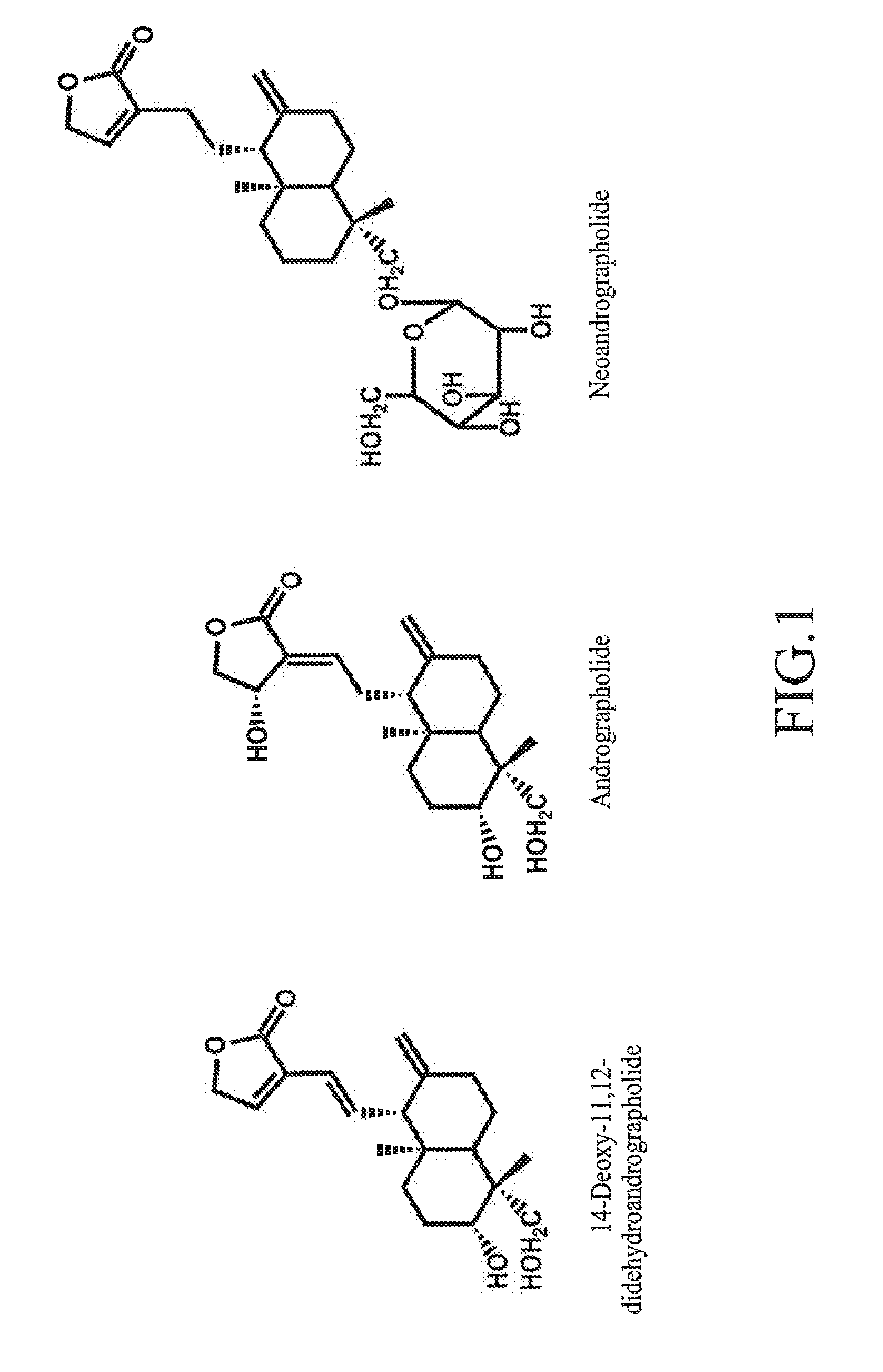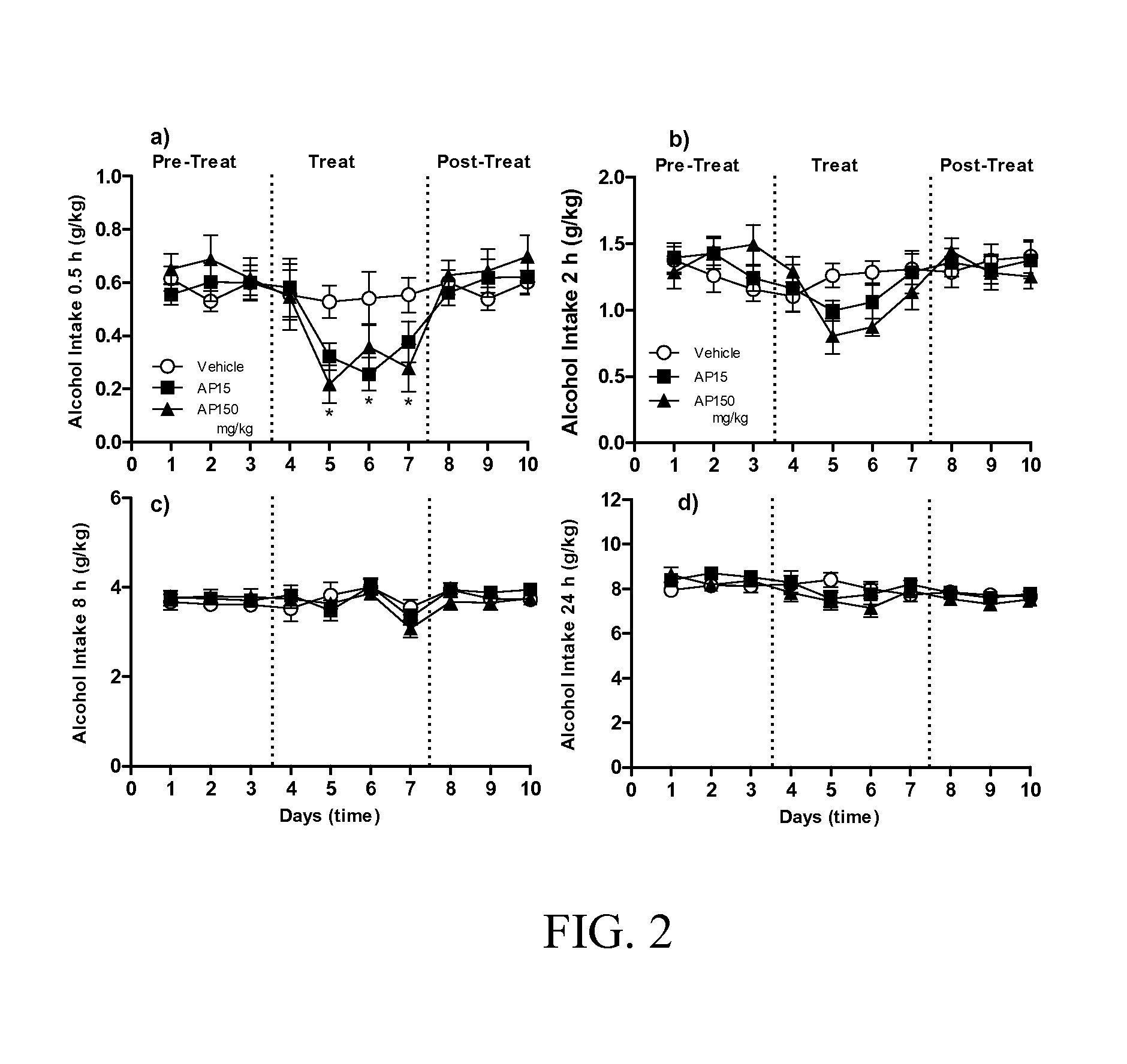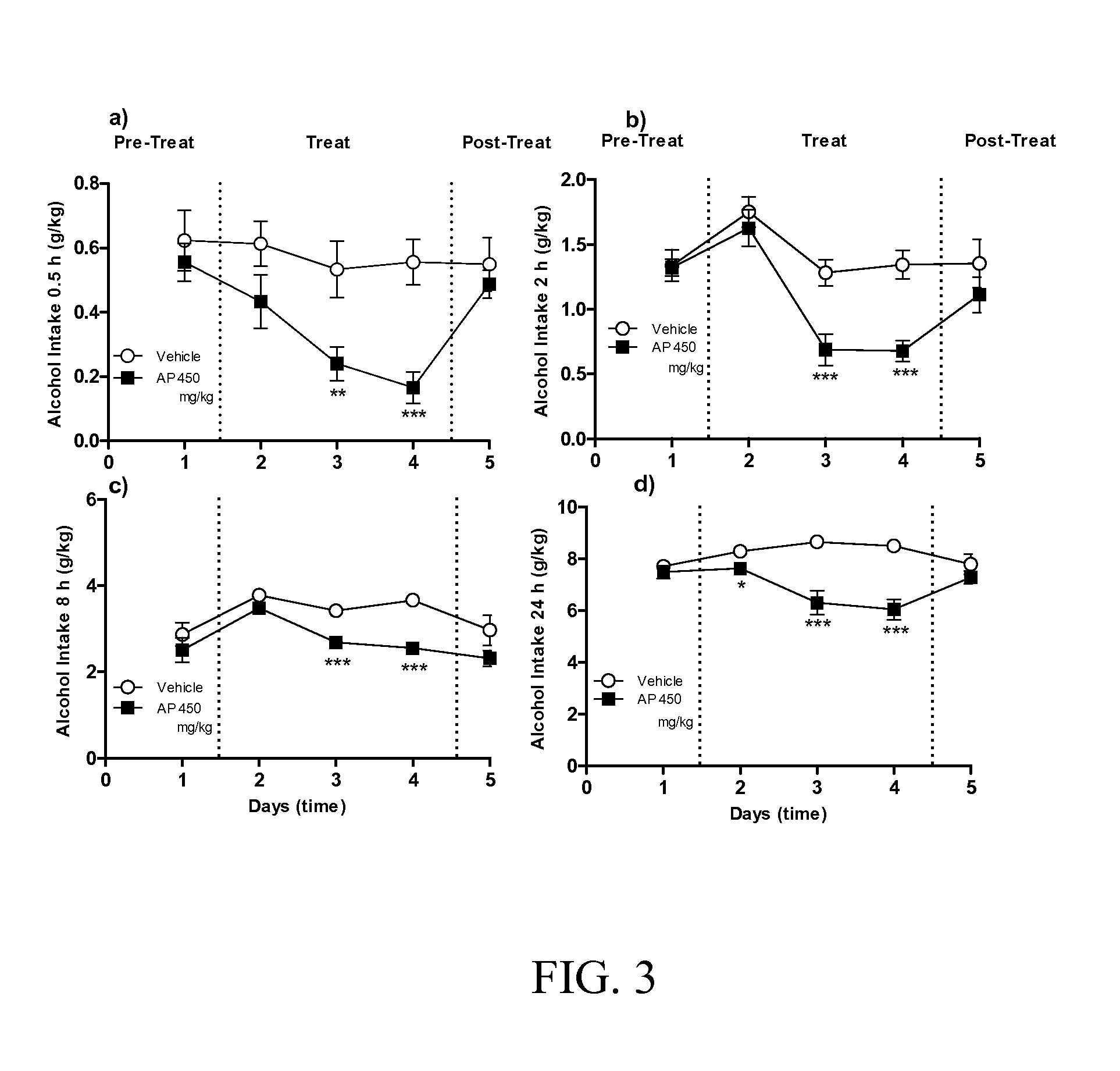Andrographis Paniculata Compositions and Methods for Treatment of Addictions
a technology of andrographis paniculata and compositions, applied in the field of addiction treatment or prevention, can solve the problems of enormous socio-economic and health impacts on the world population, elevated alcohol consumption, and detrimental consequences
- Summary
- Abstract
- Description
- Claims
- Application Information
AI Technical Summary
Benefits of technology
Problems solved by technology
Method used
Image
Examples
example 1
Effect of A. Paniculata on Alcohol Intake in msP Rats
[0174]To assess the effect of A. paniculata on voluntary alcohol intake, the inventor used the two-bottle choice paradigm in Marchigian Sardinian (msP) rats, a validated animal model of alcohol abuse (Ciccocioppo et al, 2006; Hansson et al, 2006). MsP rats were trained to drink 10% (v / v) alcohol for 24 hours per day (free choice between water and alcohol) until a stable baseline of alcohol intake was reached (5-7 g / kg / day). Before initiation of treatment, rats were trained to drug administration procedures for several days during which they received vehicles. At this point, one group of animals (N=27) was tested for the effect of A. paniculata (0, 15 and 150 mg / kg) on alcohol intake using a between-subject design in which each group of animals (N=9 / group) received a different dose of drug. Treatments were continued for 4 consecutive days, and drug or vehicle were administered twice daily at 12 hours and at 1 hour before the beginn...
example 2
Effect of A. Paniculata on Yohimbine-Induced Reinstatement of Alcohol Seeking in msP Rats
[0179]The experiment consisted of three phases:
[0180]Operant Self-Administration Training Phase:
[0181]Animals (N=8) were trained to self-administer 10% alcohol (v / v) in 30-minute (30-min) daily sessions on a fixed-ratio 1 schedule of reinforcement, in which each response resulted in delivery of 0.1 ml of fluid. During the first 6 days of training, rats were allowed to lever-press for a 10% (v / v) alcohol solution containing 0.2% (w / v) saccharin solution, on a FR-1 schedule. In the following days, msP rats were trained to self-administer 10% alcohol solution (v / v) on a FR-1, time out 5 second (TO 5 s.) schedule of reinforcement. The TO period was signalled by illumination of a white house light above the right lever for 5 s. 10% (v / v) alcohol self-administration continued until stable baseline of responding was achieved.
[0182]Extinction Phase.
[0183]After the last alcohol self-administration sessio...
example 3
Effect of A. Paniculata on Cue-Induced Reinstatement of Alcohol Seeking in msP Rats
[0188]Conditioning Phase.
[0189]Using operant chambers (see above), msP rats were trained to discriminate between 10% alcohol and water. The discriminative stimulus for alcohol consisted of the odour of an orange extract (S+) whereas water availability (i.e., no reward) was signalled by an anise extract (S−). The olfactory stimuli were generated by depositing six to eight drops of the respective extract into the bedding of the operant chamber. In addition, each lever-press resulting in delivery of alcohol was paired with illumination of the chamber's house light for 5 seconds. The corresponding cue during water sessions was a 5 s second white noise tone. Concurrently with the presentation of these stimuli, a 5 second time-out period was in effect, during which responses were recorded but not reinforced. The olfactory stimuli serving as S+ or S− for alcohol availability were introduced one minute before...
PUM
| Property | Measurement | Unit |
|---|---|---|
| time | aaaaa | aaaaa |
| humidity | aaaaa | aaaaa |
| temperature | aaaaa | aaaaa |
Abstract
Description
Claims
Application Information
 Login to View More
Login to View More - R&D
- Intellectual Property
- Life Sciences
- Materials
- Tech Scout
- Unparalleled Data Quality
- Higher Quality Content
- 60% Fewer Hallucinations
Browse by: Latest US Patents, China's latest patents, Technical Efficacy Thesaurus, Application Domain, Technology Topic, Popular Technical Reports.
© 2025 PatSnap. All rights reserved.Legal|Privacy policy|Modern Slavery Act Transparency Statement|Sitemap|About US| Contact US: help@patsnap.com



